Prince Philip: Land Rover hearse and other personal touches at duke's funeral
- Published
Those watching the Duke of Edinburgh's funeral will have seen several elements unique to the occasion, which showed his personal touch in planning its content.
For all but the most seasoned of royal watchers, they need some further explanation.
1) The duke's driving carriage and gloves
On the seat of the duke's favourite driving carriage, which was given a special role in the proceedings, were laid his cap, whip and brown driving gloves.
The carriage, accompanied by some of his grooms and pulled by his two trusty black Fell ponies, Balmoral Nevis and Notlaw Storm, stood in the Quadrangle as the procession passed by.
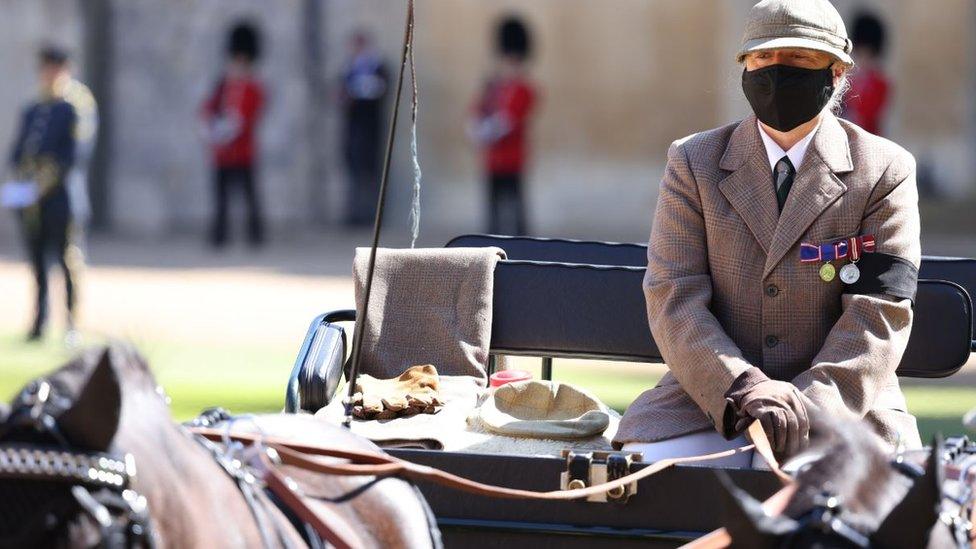
It was a nod to Prince Philip's love of the fast-paced sport, which he took up when he turned 50 and continued to enjoy non-competitively in his 90s.
The polished dark green aluminium and steel four-wheeled carriage was built to the duke's exact specifications eight years ago, and he began using it at the age of 91 for riding around Windsor and other royal estates.
The red container you could see on the carriage seat next to his cap, whip and gloves, was the sugar lump pot, from which Prince Philip used to give his ponies treats.
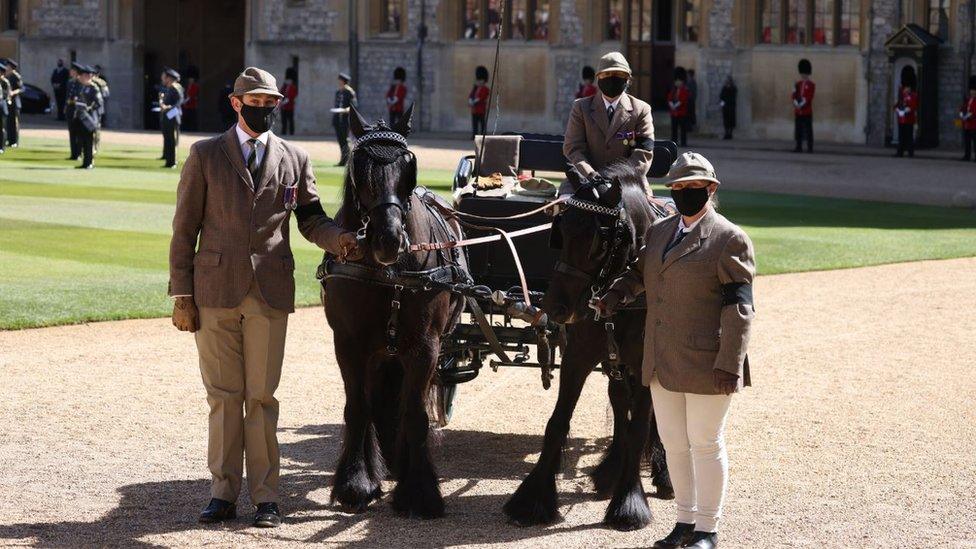
2) The piping sailors
As the Land Rover hearse stopped at St George's Chapel a Royal Navy piping party piped the Still - a naval command to call the crew to attention.

The Royal Navy Piping Party pipes the Still
As a bearer party of Royal Marines lifted the coffin from the vehicle, the piping party piped the Carry On, after which the coffin was carried up the steps.
The pipes, known as a boatswain's call or bosun's whistle, were traditionally used to give commands because their high-pitch could be heard over the noise of bad weather or the crew at work.
Now the whistles are used for a ceremonial salute for an important guest, senior officer or at a funeral.
During the funeral itself the Last Post was sounded by buglers from the Royal Marines in the nave of the chapel. They also sounded Action Stations - a signal that all hands should be ready for battle - as the coffin was lowered into the Royal Vault at the end of the service.
The Royal Navy was an important part of the duke's life and he served with distinction during World War Two before giving up the naval life to support his wife in her royal duties.
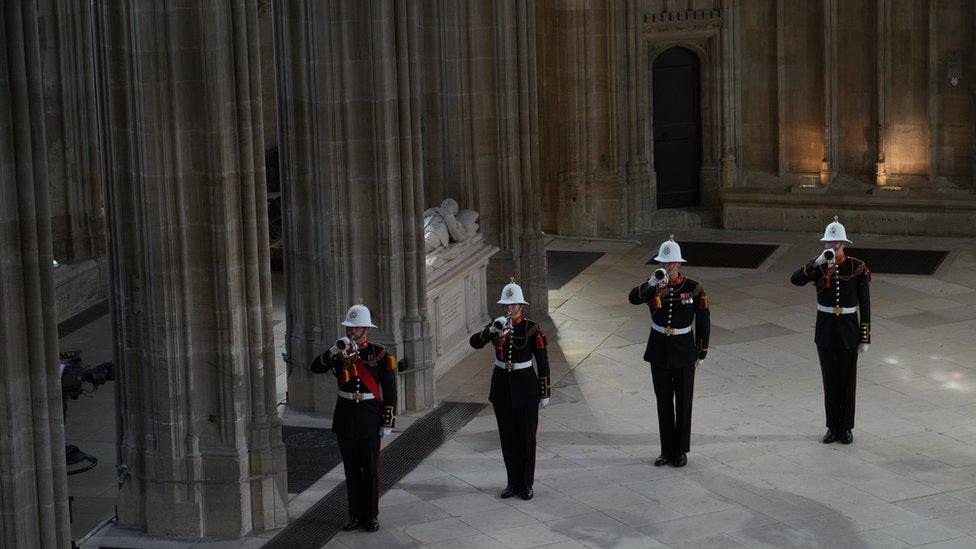
Buglers of the Royal Marines during the funeral of the Duke of Edinburgh
3) Prince Philip's personal flag
The duke's coffin was draped in his personal flag, his standard. The flag represents elements of his life, from his Greek heritage to his British titles.
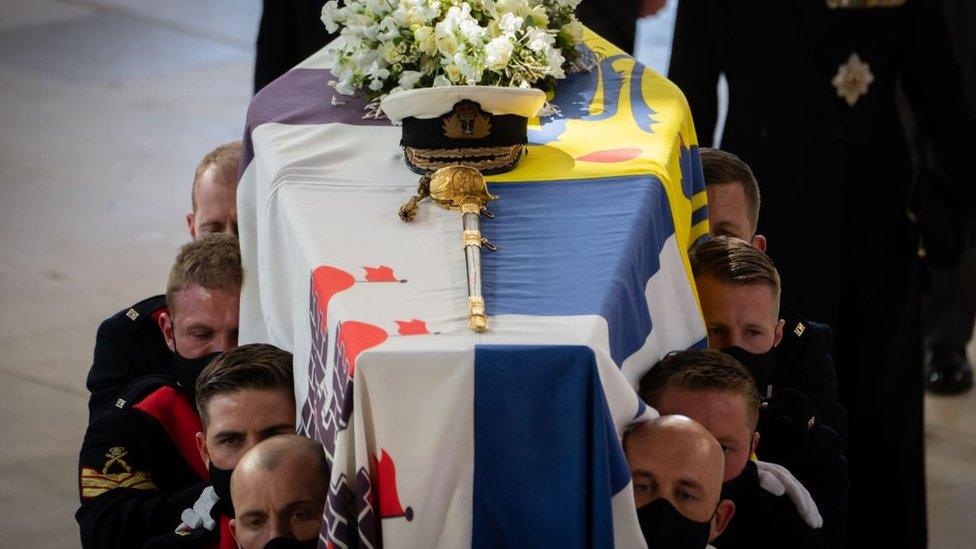
When the duke got engaged to the then Princess Elizabeth in 1946, he renounced his Greek title and became a British citizen, taking his mother's anglicised name, Mountbatten.
The Mountbatten family is therefore also represented on the standard, alongside the castle from the arms of the City of Edinburgh - he became Duke of Edinburgh when he married.
The duke's naval cap and Royal Navy officer's sword were also laid on top of his coffin.
4) The Brilliant Star of Zanzibar... and other medals
Nine cushions were placed on the altar of St George's Chapel, displaying a selection of the medals and other decorations the duke received. He chose these himself as he planned his funeral in detail.
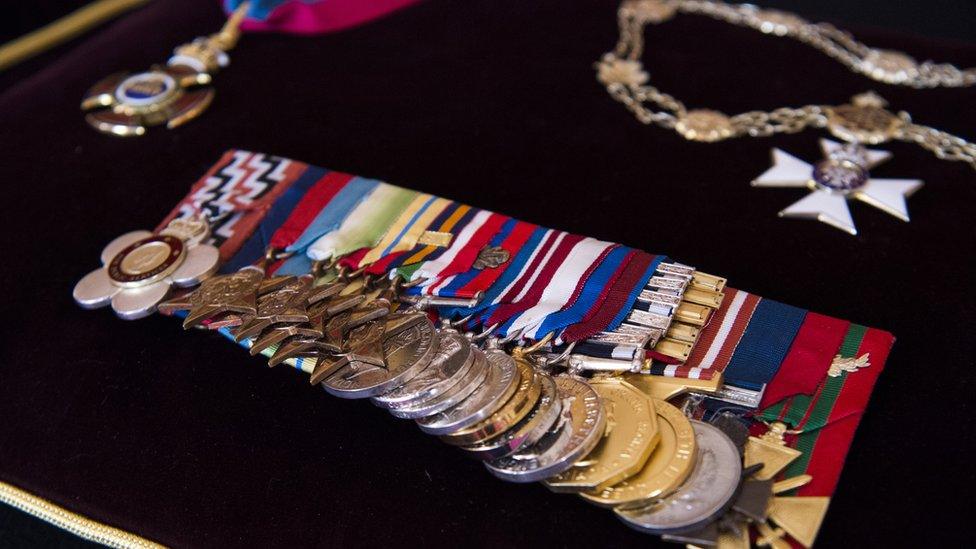
The regalia - including the Order of the Brilliant Star of Zanzibar, the Brunei Esteemed Family Order, and the Singapore Order of Darjah Utama Temasek - were sewn on to the cushions using fish wire, rather than braid, which is more noticeable.
It is thought the duke received awards and decorations from more than 50 countries. There was not enough space to display them all in the chapel.
5) A Land Rover for a hearse
It was an unusual sight to see a green Land Rover in the Duke of Edinburgh's funeral procession to St George's Chapel, and a marked contrast to previous royal funerals, when the sombre sight of a traditional hearse greeted mourners.
But Land Rovers have been favourite vehicles of the duke's for decades, so when it came to planning for his funeral there really was only one choice of vehicle to bear him on his final journey.
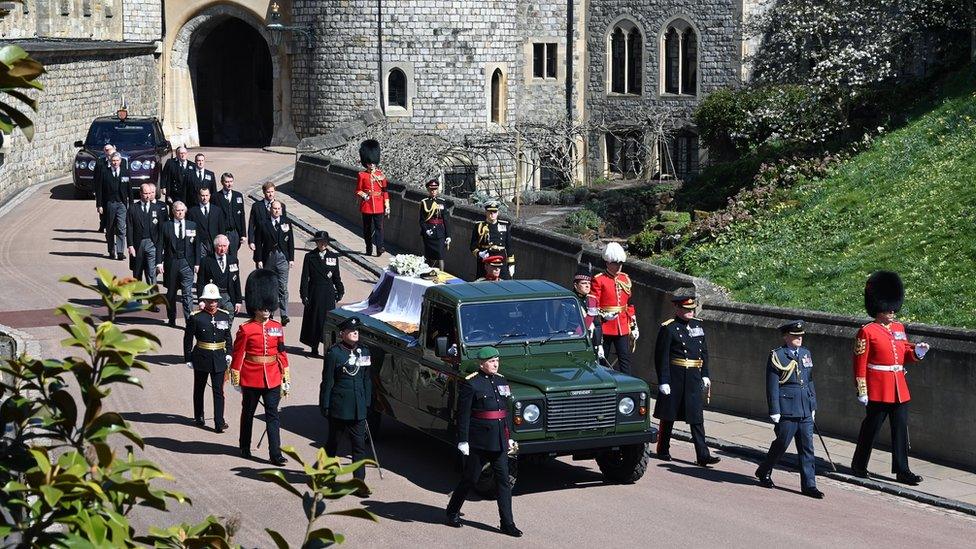
The duke spent 16 years modifying this particular model, a Land Rover Defender TD5 130, which was made at the company's Solihull factory in 2003.
He began overseeing the work needed to turn it into his own bespoke hearse that year, when he was 82, and made the final adjustments in 2019, the year he turned 98.
The utility vehicle was repainted in military green at the duke's request and he designed the open-top rear for his coffin, as well as the "stops" to secure it in place.
It's been widely reported over the years that Prince Philip once quipped to the Queen about his future funeral: "Just stick me in the back of a Land Rover and drive me to Windsor." Although Covid restrictions meant there was no procession from central London to Windsor, the duke got the other part of that wish.
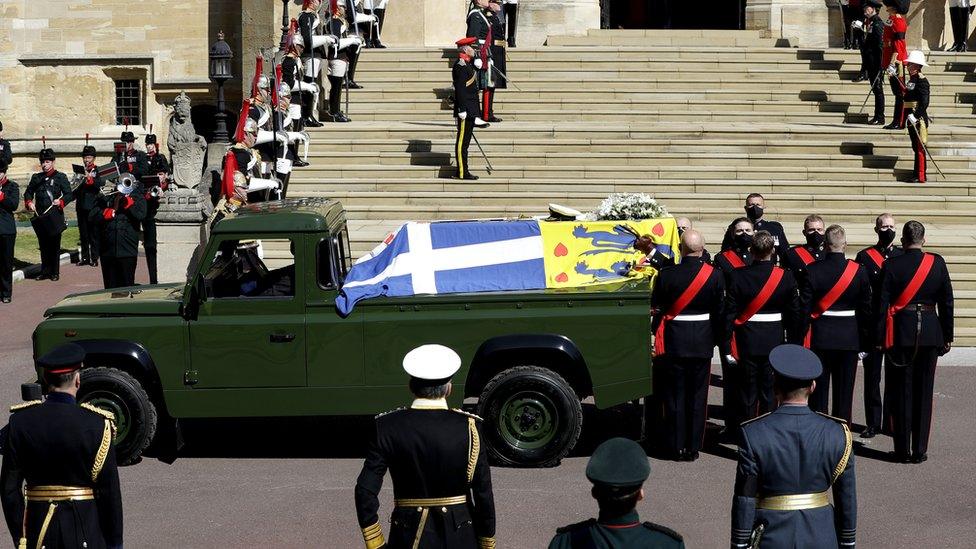
The Duke also had input on the vehicle which transported the Queen to the chapel.
The State Bentley was presented to Her Majesty in 2002 to mark her Golden Jubilee, and the Queen and the duke offered "continual" input during the two years it took to build the car, according to Bentley.

